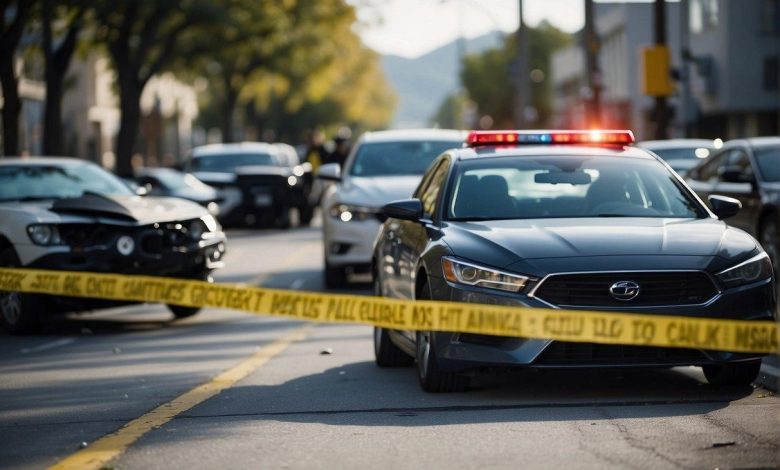Car Accident Laws and Regulations to Know: Dodging Troubles on the Road!

Navigating the labyrinthine world of car accident laws and regulations can sometimes feel like trying to decipher an ancient riddle. But fear not, for every motorist’s journey through the aftermath of a car accident could be less of a wild goose chase with a handy map of knowledge. In the twisty roads of legal paths and bylaws, one needs to know their rights with a lawyer who can help you view more so they know their car’s glove compartment contents—completely, even if it’s just old receipts and candy wrappers.
For those who find themselves in the unfortunate front seat of a vehicular mishap, understanding the local car accident reporting requirements is crucial. In places like Naperville, Illinois, a driver must report an accident if it meets certain conditions, such as resulting in injury or exceeding a specific amount of property damage. This isn’t just bureaucracy in overdrive—it’s about ensuring that the big insurance race can begin with all the necessary runners and riders: facts, figures, and an official accident report.
Lawyers zoom in as saviors dressed in suits, not capes, ready to help sort out the question of fault and to what extent a driver can dip into their legal rights piggy bank. Depending on your local state laws, even a smidgen over 50% at fault could mean the difference between a settlement to cover the ding on your bumper or walking away with empty pockets. Hence, post-accident, drivers must not only check their mirrors but also their state’s specific threshold for fault—be it modified comparative fault, contributory negligence, or another system with an equally complex name.
Knowing the Car Accident Laws

Navigating through car accident laws is akin to figuring out who ate the last piece of pie at the family gathering—important to know who’s to blame and when to bring it up. The driver needs to grasp the nitty-gritty of fault versus no-fault states, the ticking clock of the statute of limitations, and the delightful dance with police reporting.
Fault vs. No-Fault States
In the riveting realm of car accidents, states pick sides: fault or no-fault. In fault states, they point fingers like in an old Western shootout, determining who caused the crash to assign liability. Meanwhile, no-fault states stride on the chill path, where each person’s insurance company pays for their injuries or damages, irrespective of who played bumper cars.
| Fault States | Get out your detective hat |
| No-Fault States | Keep calm and claim from your policy |
Statute of Limitations Scoop
Ah, the statute of limitations, the legal world’s version of “You snooze, you lose.” Drivers have a deadline to file lawsuits or claims post-accident. Like a ticking time bomb, it can range from one to six years, depending on the state. Miss this, and well, justice might just yawn and walk away.
Example: California’s sunny disposition extends to giving drivers a generous two-year countdown for personal injuries and three years for property damage.
Police Reporting Shenanigans
When a driver plays bumper cars a bit too literally, the police report becomes the gossip column of the incident. States have rules about when to call the boys in blue or the local police department. If there’s significant damage, injuries, or one’s mood matches the crumpled metal, a report is often required.
- Minor Scrap: Exchange info and keep going.
- Opera-level Drama: Call the police, make it official.
And for the Californians zooming down the highway, if the metal gets twisted, get the California Highway Patrol on the horn to make it Hollywood official.
Insurance Comedy Central

Navigating car insurance policies can feel like a stand-up act where the punchlines are hidden in fine print. A driver must arm themselves with knowledge; otherwise, they may end up the unintended punchline of an insurance joke.
Deciphering Coverage Jargon
They say laughter is the best medicine, but try chuckling when an insurance company throws terms like bodily injury liability and property damage liability at you. Bodily injury liability coverage protects a driver financially in case they’re at fault and someone gets hurt—no laughing matter there. On the flip side, should a driver crash into a lamppost, their property damage liability jumps into action, covering the expenses for the tango with the lamppost.
Minimum insurance requirements are like the ticket price for the show—each state sets the bar for the least amount of coverage a driver needs to hit the road legally. It’s a driver’s job to meet or exceed these limits unless they fancy a risky improv act with law enforcement.
The Battle with Insurance Companies
Battling an insurance company for coverage can feel like a dramatic improv performance where the driver and the insurer improv their way through a murky swamp of insurance claims. Filing a claim is no joke, but sometimes, the process feels like one. An insurer’s appetite for humor may dissipate when big bucks are on the table.
Drivers often find themselves squaring off with insurers over uninsured or underinsured motorist coverage—coverage that’s no laughing matter when an uninsured comedian hits their car. And then there’s the matter of additional coverage; like an encore of laughter, these optional add-ons can protect a driver from all sorts of on-stage mishaps.
In the comedy club of car insurance, each driver must play the financial responsibility straight. “Hit and run” is a serious offense, not a gag in a skit, and maintaining the right level of car insurance can keep a driver’s act clean and on the right side of the law.
Navigating Compensations and Liabilities

When one’s peaceful drive is rudely interrupted by a fender bender—or let’s be honest, an asphalt ballet of chaos—knowing how to navigate the murky waters of compensations and liabilities is as essential as understanding why one should never text and drive.
Calculating Damages for Dummies
Calculating damages is not exactly rocket science, but it does require a bit of math finesse. Economic damages are relatively straightforward, covering quantifiable losses like medical bills and lost wages. One needs to pull out receipts and pay stubs as if they’re the most treasured family recipes. On the other hand, calculating compensation for serious injuries or the unthinkable, death, strides into the land of non-economic damages. Pain, suffering, and the inability to perform the Macarena at family gatherings fall under this somber category.
Understanding Comparative Negligence
Now, let’s waltz into the salsa of liabilities with comparative negligence. Under the pure comparative negligence system, even if one is more clumsy on the roads than on a dance floor, they can still recover damages. It’s all about the percentage of fault, and as the name implies, pure comparative negligence ensures that compensation is awarded even if the victim is 99% at fault. It’s like getting a consolation prize for showing up to a dance-off with two left feet. The comparative negligence rules mean that if one is 20% responsible for their own automotive tango gone wrong, they’ll only receive 80% of the award. It’s a math problem no one wants, but everyone should know how to solve.
The Legal Maze Post-Accident

Navigating the post-accident legal labyrinth requires wisdom worthy of a mythic hero. They must decide whether to unsheathe the sword of litigation or shield themselves with wise counsel.
To Sue or Not to Sue
One might ponder whether to raise the legal gauntlet post-car accident. The decision often hinges on the damage dealt to both chariot and charioteer. If personal injury protection (PIP) coverage doesn’t cover one’s noble steed’s damages or the sorcerer’s healing fees, legal action might be the chosen quest. They should consider the severity of their injuries, the clarity of liability, and consult the ancient scrolls of the Vehicle Code for guidance.
The Quest for the Right Legal Champion
Securing a legal champion, often known as an auto accident lawyer, isn’t just about finding the mightiest in the land; it’s about finding a fit for their unique quest. Look for a car accident attorney with a triumphant history in similar battlegrounds. One must ensure their legal representation sends the SR-1 form to the DMV faster than a dragon’s flight to avoid a dreaded license suspension. The proper auto accident lawyer shall weave through the legal tapestry with finesse, battling for their client’s restitution as if it were a golden fleece.
When the dust settles on the legal coliseum, a well-chosen attorney could turn the tides in favor of justice and compensation, securing peace in the realm once more.




